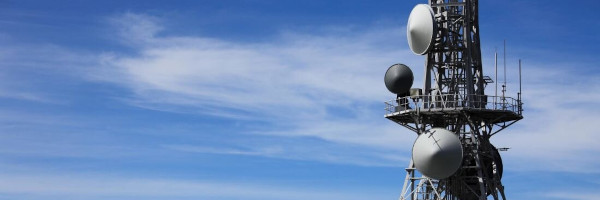Communications and Broadband: Difference between revisions
No edit summary |
No edit summary |
||
| Line 20: | Line 20: | ||
==Key Features== | ==Key Features== | ||
:'''High Speed''': Broadband offers significantly faster internet speeds compared to traditional dial-up connections, facilitating quick data transfer and improved user experience. | :'''High Speed''': Broadband offers significantly faster internet speeds compared to traditional dial-up connections, facilitating quick data transfer and improved user experience. | ||
Always-On Connection: Unlike dial-up, broadband connections are always active, allowing users to stay connected without the need to dial in. | :'''Always-On Connection''': Unlike dial-up, broadband connections are always active, allowing users to stay connected without the need to dial in. | ||
:'''Multiple Services''': Broadband supports a variety of services, including internet access, voice communication (VoIP), and video streaming. | :'''Multiple Services''': Broadband supports a variety of services, including internet access, voice communication (VoIP), and video streaming. | ||
===Types of Broadband=== | ===Types of Broadband=== | ||
Digital Subscriber Line (DSL): Uses existing telephone lines to provide high-speed internet access. | :'''Digital Subscriber Line (DSL)''': Uses existing telephone lines to provide high-speed internet access. | ||
Cable Broadband: Delivered through cable television infrastructure, offering fast and reliable connectivity. | :'''Cable Broadband''': Delivered through cable television infrastructure, offering fast and reliable connectivity. | ||
Fiber-Optic Broadband: Utilizes fiber-optic cables to transmit data as pulses of light, providing extremely high speeds and reliability. | :'''Fiber-Optic Broadband''': Utilizes fiber-optic cables to transmit data as pulses of light, providing extremely high speeds and reliability. | ||
Wireless Broadband: Delivered wirelessly using technologies such as Wi-Fi, 4G, and 5G. | :'''Wireless Broadband''': Delivered wirelessly using technologies such as Wi-Fi, 4G, and 5G. | ||
Impact on Society | ==Impact on Society== | ||
Economic Development | ===Economic Development=== | ||
Business Growth: High-speed communications and broadband enable businesses to reach a global audience, fostering economic growth and innovation. | :'''Business Growth''': High-speed communications and broadband enable businesses to reach a global audience, fostering economic growth and innovation. | ||
Remote Work: Broadband facilitates remote work opportunities, allowing individuals to work from anywhere with a reliable internet connection. | :'''Remote Work''': Broadband facilitates remote work opportunities, allowing individuals to work from anywhere with a reliable internet connection. | ||
Social Connectivity | ===Social Connectivity=== | ||
Global Communication: Communications technologies bridge geographical gaps, connecting people worldwide through various platforms and social media. | Global Communication: Communications technologies bridge geographical gaps, connecting people worldwide through various platforms and social media. | ||
Access to Information: Broadband enables access to a vast amount of information, contributing to education, research, and informed decision-making. | Access to Information: Broadband enables access to a vast amount of information, contributing to education, research, and informed decision-making. | ||
Revision as of 22:21, January 25, 2024
| Broadband | |
|---|---|

| |
| Sectors | Broadband |
| Contact | Bill Pugh |
| Topics | |
- Authors
Communications and broadband are integral components of modern connectivity, playing a crucial role in the exchange of information, fostering global collaboration, and driving economic development. This page explores the definitions, technologies, and the impact of communications and broadband on societies around the world.
Communications
Communications refer to the transmission of information, data, or messages from one point to another. This can involve various mediums such as verbal, written, visual, or electronic forms. In the context of technology, communications often involve the use of electronic devices and networks.
Modes of Communication
- Verbal Communication: Spoken or written words used for conveying messages.
- Written Communication: Messages communicated through text, often in the form of letters, emails, or documents.
- Visual Communication: Conveying information through visual elements like images, charts, or graphs.
- Electronic Communication: Utilizing electronic devices and networks for information exchange, including the internet, emails, and instant messaging.
Broadband
Broadband refers to high-capacity transmission of data over a wide range of frequencies. It allows for the simultaneous transmission of multiple signals and data types, providing fast and reliable internet connectivity.
Key Features
- High Speed: Broadband offers significantly faster internet speeds compared to traditional dial-up connections, facilitating quick data transfer and improved user experience.
- Always-On Connection: Unlike dial-up, broadband connections are always active, allowing users to stay connected without the need to dial in.
- Multiple Services: Broadband supports a variety of services, including internet access, voice communication (VoIP), and video streaming.
Types of Broadband
- Digital Subscriber Line (DSL): Uses existing telephone lines to provide high-speed internet access.
- Cable Broadband: Delivered through cable television infrastructure, offering fast and reliable connectivity.
- Fiber-Optic Broadband: Utilizes fiber-optic cables to transmit data as pulses of light, providing extremely high speeds and reliability.
- Wireless Broadband: Delivered wirelessly using technologies such as Wi-Fi, 4G, and 5G.
Impact on Society
Economic Development
- Business Growth: High-speed communications and broadband enable businesses to reach a global audience, fostering economic growth and innovation.
- Remote Work: Broadband facilitates remote work opportunities, allowing individuals to work from anywhere with a reliable internet connection.
Social Connectivity
Global Communication: Communications technologies bridge geographical gaps, connecting people worldwide through various platforms and social media. Access to Information: Broadband enables access to a vast amount of information, contributing to education, research, and informed decision-making. Challenges and Future Trends Digital Divide: Disparities in access to broadband, both regionally and globally, create a digital divide that hinders equitable access to information and opportunities. Security Concerns: With the increasing reliance on digital communication, cybersecurity becomes a critical concern to protect against threats and breaches.

